Abstract
Dilution had an adverse effect on the infectivity of 24 h cultures of a strain of Fusobacterium necrophorum, which became apparent at or near the minimum lethal dose. Thus in mice inoculated subcutaneously the mortality produced by 0.01 ml of undiluted culture was almost invariably greater than that produced by 0.1 ml of a 1 in 10 dilution. The explanation appeared to lie in the increased physical separation of bacterial cells that was the inevitable consequence of dilution.
Full text
PDF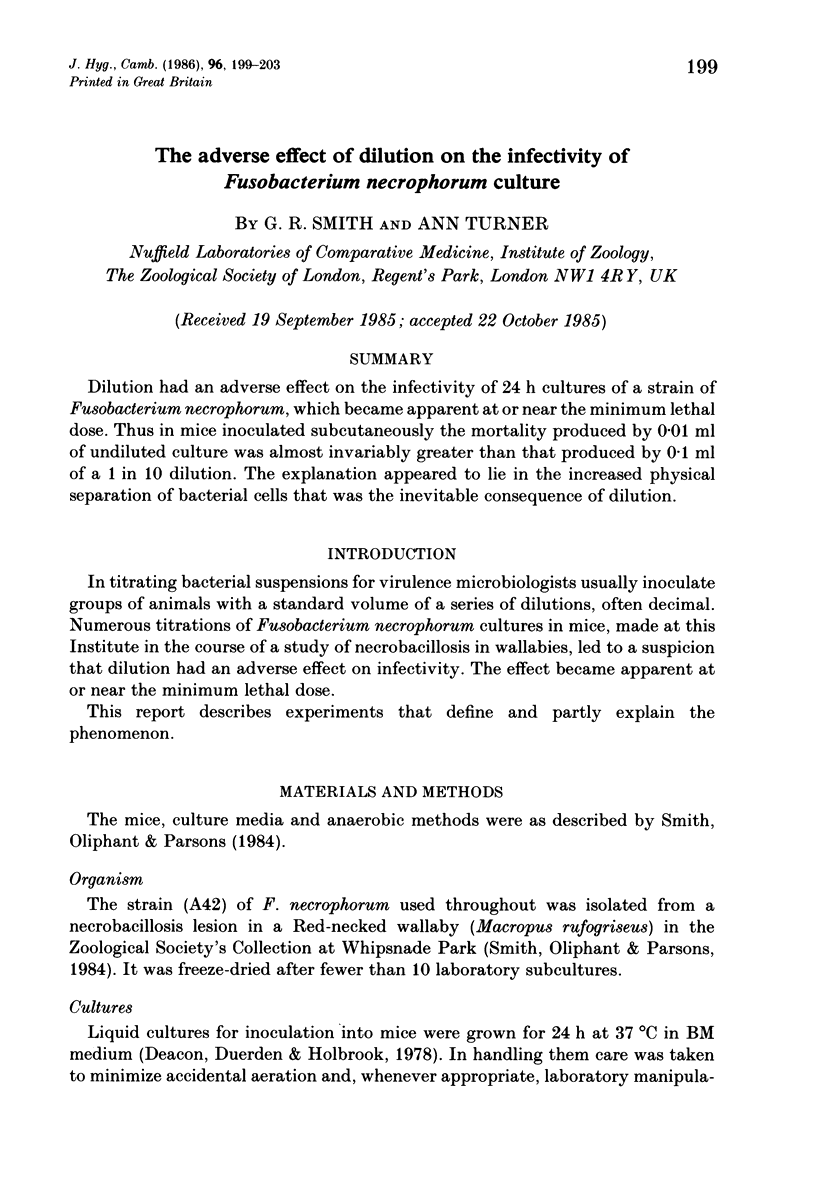
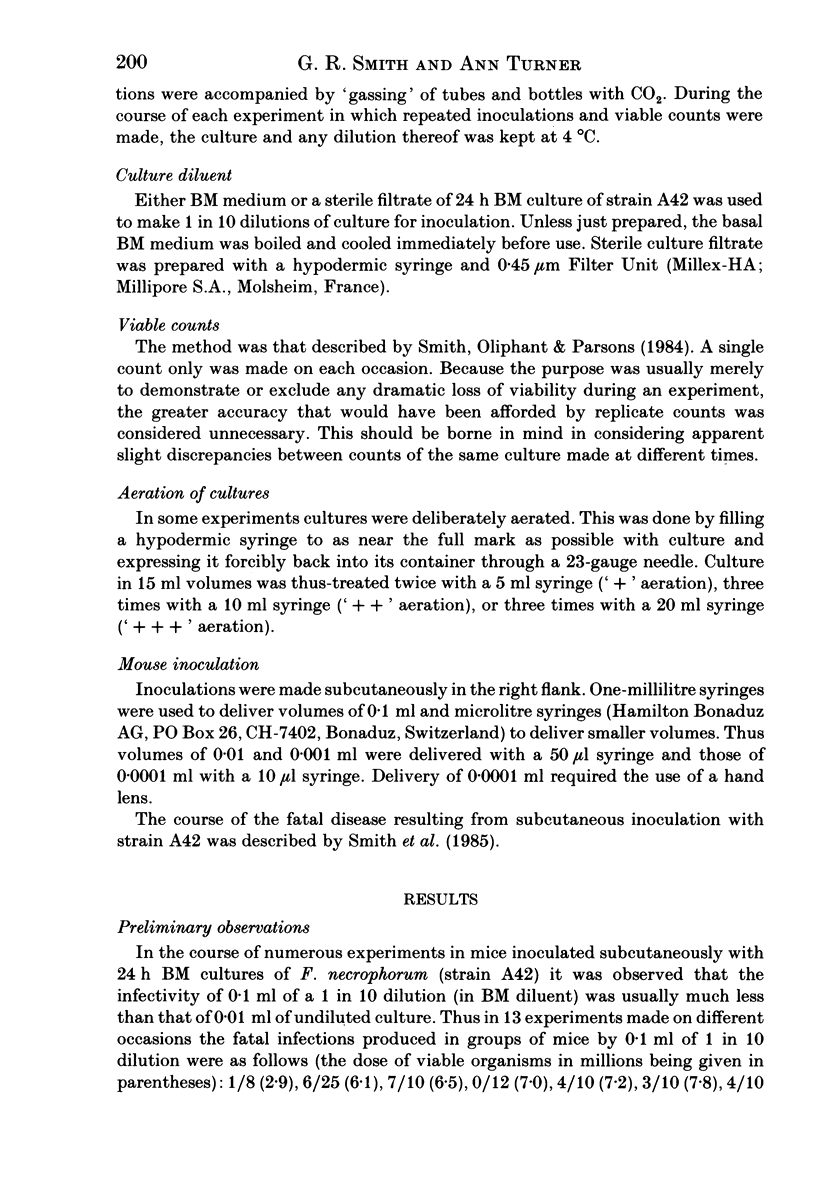
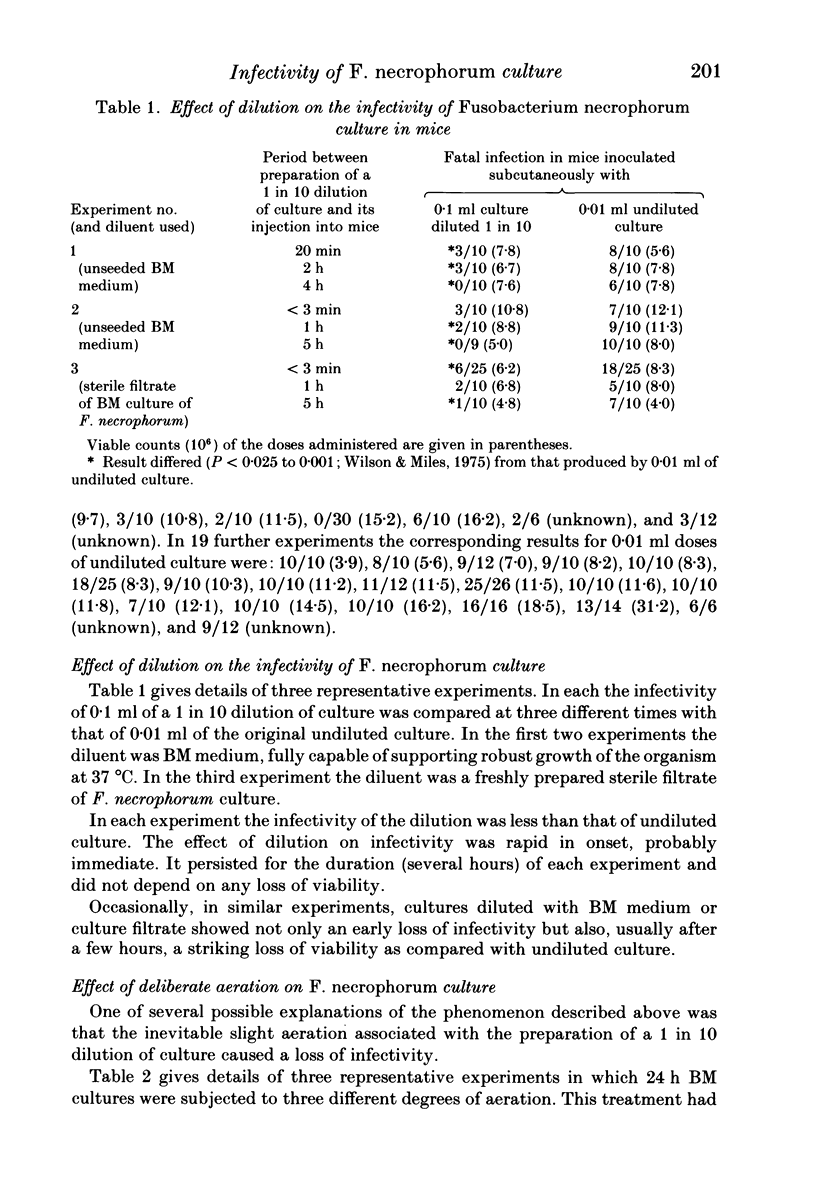
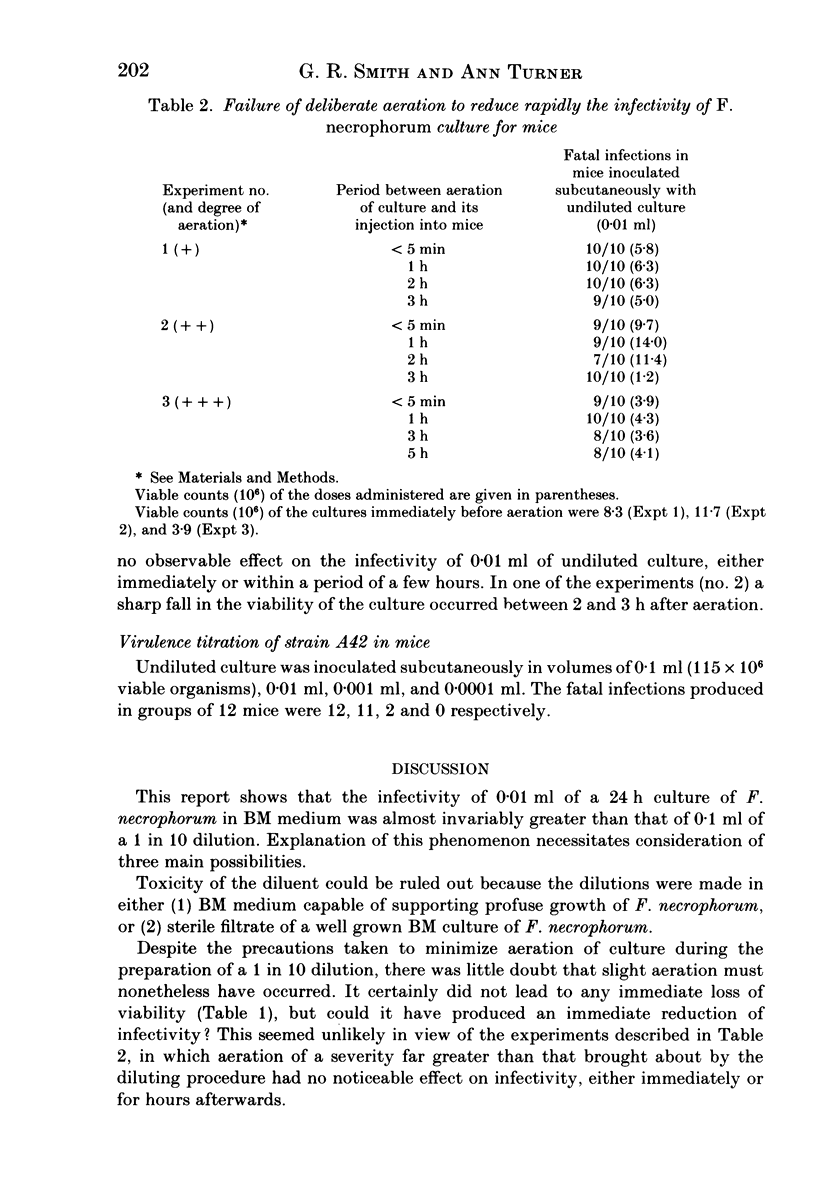
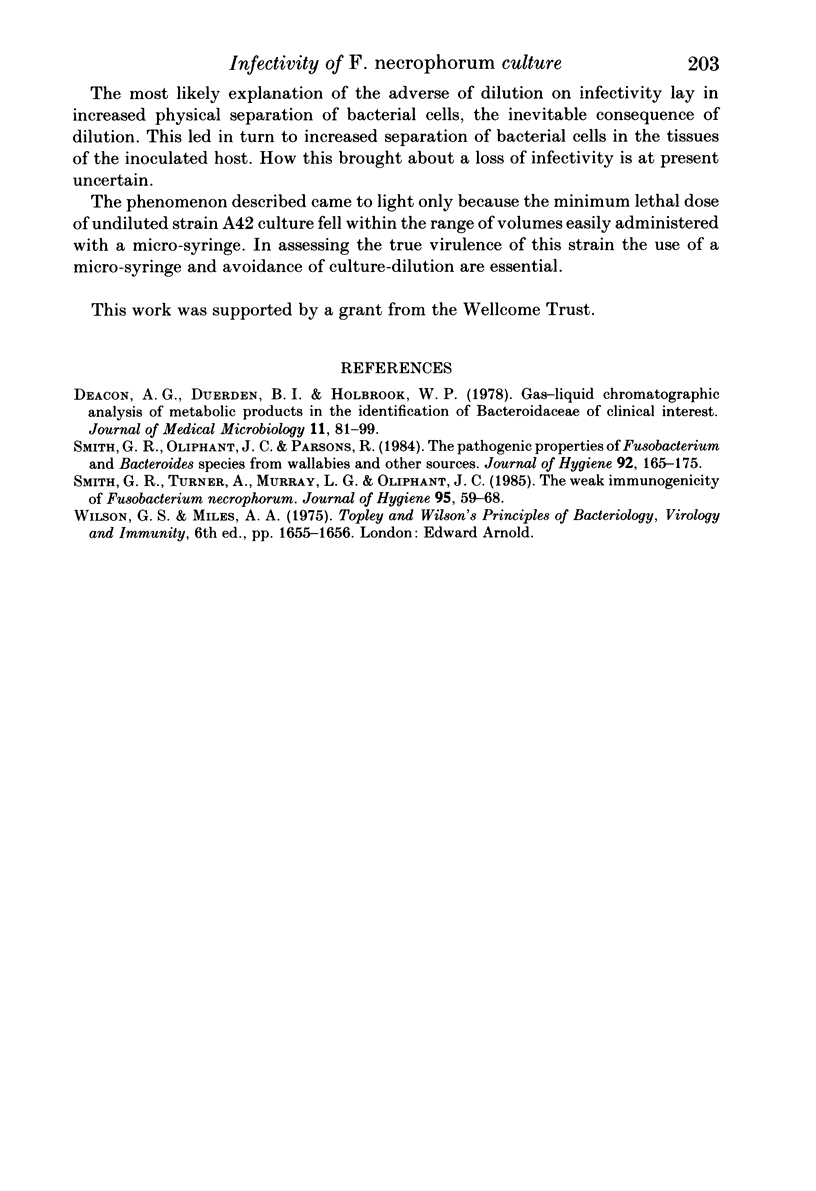
Selected References
These references are in PubMed. This may not be the complete list of references from this article.
- Deacon A. G., Duerden B. I., Holbrook W. P. Gas-lipuid chromatographic analysis of metabolic products in the identification of bacteroidaceae of clinical interest. J Med Microbiol. 1978 May;11(2):81–99. doi: 10.1099/00222615-11-2-81. [DOI] [PubMed] [Google Scholar]
- Smith G. R., Oliphant J. C., Parsons R. The pathogenic properties of Fusobacterium and Bacteroides species from wallabies and other sources. J Hyg (Lond) 1984 Apr;92(2):165–175. doi: 10.1017/s0022172400064184. [DOI] [PMC free article] [PubMed] [Google Scholar]
- Smith G. R., Turner A., Murray L. G., Oliphant J. C. The weak immunogenicity of Fusobacterium necrophorum. J Hyg (Lond) 1985 Aug;95(1):59–68. doi: 10.1017/s0022172400062288. [DOI] [PMC free article] [PubMed] [Google Scholar]


